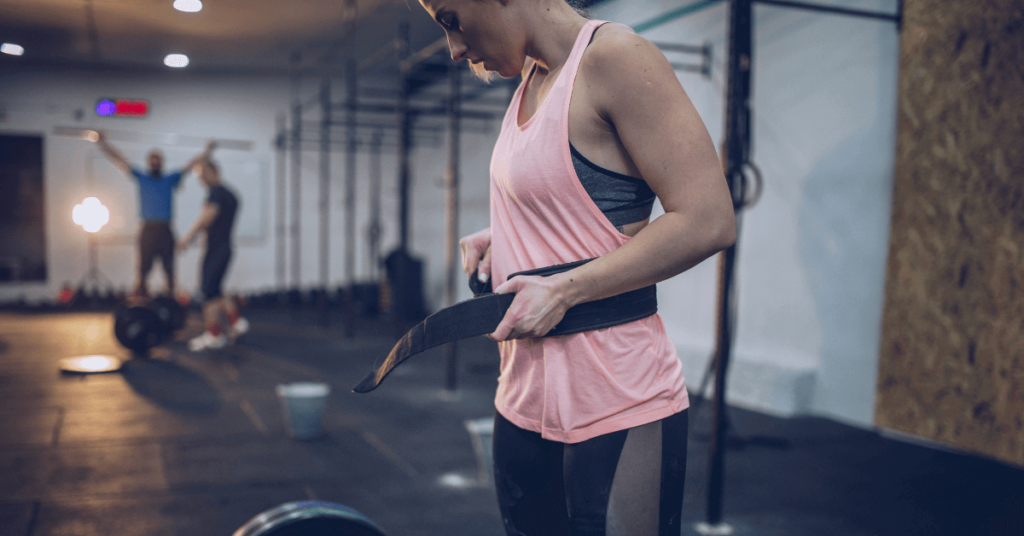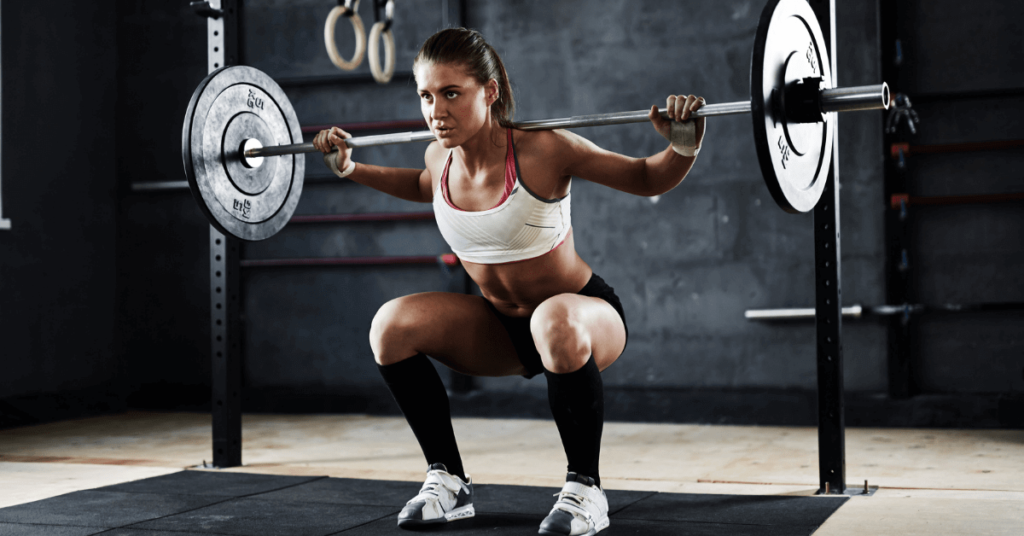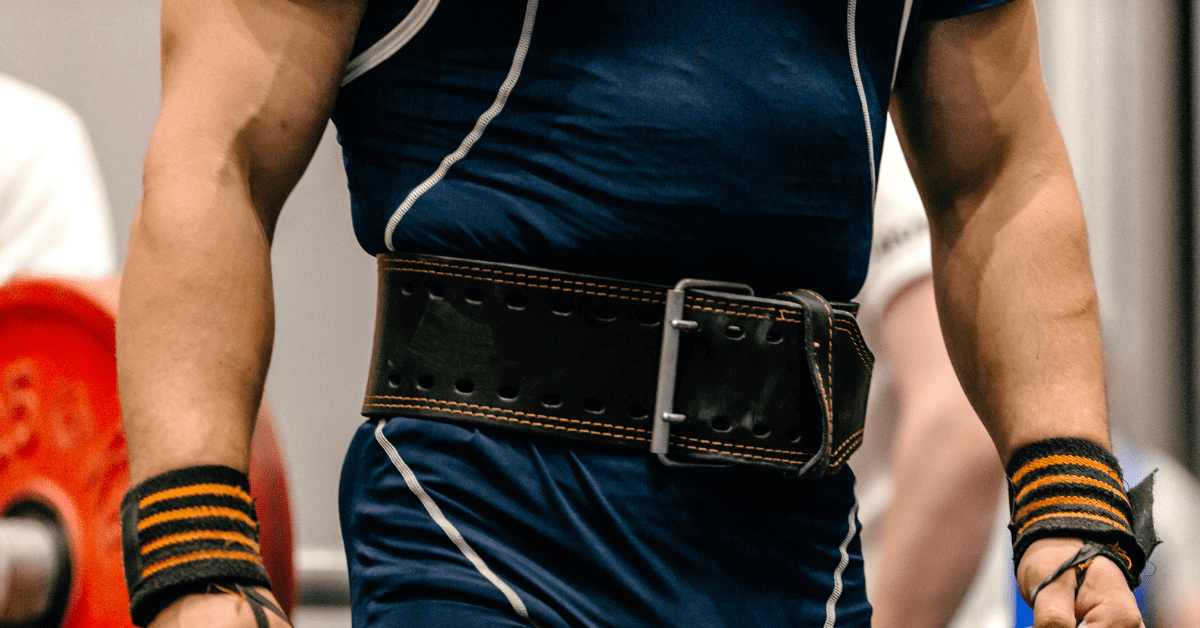It seems almost inevitable that at some point during your fitness journey you may have seen someone wearing a weight belt in the gym and wondered to yourself:
What does that do?
Should I be wearing one of those?
It is also very possible that that last question might have never even occurred to you up until you got that nagging lower back injury. If it has, then you are not alone. During a survey of recreational weightlifters that currently wear or have worn weight belts in the past, 90% stated that the primary reason for their weight belt use was out of fear of injury.1
Based on these findings, is it safe to assume weight belts help prevent injury?

First off, what do weight belts do?
If you have ever taken a deep breath in and tightened your core when going into a squat or just before picking up a heavy box, then you have raised your intra-abdominal pressure (IAP). You can think of this pressure and the corresponding abdominal muscles as your body’s natural weight belt or girdle. The increase in pressure your core creates works to stabilize and support your spine when placing a heavy load on it.
Imagine trying to crush an empty soda can versus a can that is full of liquid and carbonation. That unopened soda can will be much harder to crush due to the internal pressure supporting the sides of the can. Similar to the can and the internal pressure inside, your spine and the IAP located within the abdominal region work together to support the spine when placing heavy compressive loads onto it.
Weight belts work by taking advantage of this phenomenon by increasing our intra-abdominal pressure past our normal range. Research has shown that wearing a weight belt can increase your IAP 25% to 40% greater during heavy squats and deadlifts than lifting without a belt.2,3 Wearing a belt has also been shown to decrease spinal compression and shrinkage when performing heavy lifts.4,5,6
So is that it? Weight belts provide increased spinal stability and decrease compression, so to avoid injury wear the belt in the gym, and you will never get hurt again, right? Well, not so fast.
When is the right time to wear a weight belt in the gym?
In your gym travels, you might have seen some of your fellow gym-goers wearing weight belts to perform pull-ups or biceps curls and been curious about how the belt was helping them on that exercise. The short answer is that it’s not.
In reality, weight belts are recommended during exercises that involve heavy and compressive loads being placed on the spine. Some of these exercises include Olympic or powerlifting style lifts like squats, deadlifts, overhead press, and the clean & jerk.
This, however, does not mean that you should be wearing a belt every time you do an air squat or a warm-up set. If you are going to wear a belt, it’s recommended that you only do so when lifting more than 80% of your 1 repetition max because that is when your spine and back musculature are most vulnerable to injury.7 Excessive use of the weight belt when not needed can inhibit the activation of some core muscles, detraining them and essentially weakening your core.7,8
What are the best ways to prevent an injury in the gym?
You may have started to catch onto it by now, but there is more that goes into injury prevention than simply strapping on a weight belt. A study showed that low back injuries are far more frequent in newer, less experienced lifters due to improper lifting form and techniques.9
This should serve as a reminder to all weight lifters of every experience level, that there is nothing more important when weight lifting than proper body mechanics and good form.
Another great way to prevent injury, especially when performing Olympic style or power lifts it to develop a strong core. As mentioned previously, your body has a natural spine “stabilizer” powered by your core muscles. Proper training and working on a well-rounded core can do a lot for spinal stability and injury prevention.

Are you interested in learning more about what you can do to stay strong, healthy, and injury-free in the gym? Keep an eye out for our upcoming posts as we cover proper lifting mechanics and key core strengthening exercises you should perform that will assist with maintaining a good support system when it comes to heavy lifting movements.
If you are interested in getting back into the gym after a weight lifting-related injury, it is recommended that you seek out a licensed healthcare professional. A physical therapist trained as a movement specialist can guide you appropriately when returning to Olympic-style weight training.
Blog courtesy of:
Jessie Hernandez
Launch Physical Therapy & Sports Performance Center
admin@launchphysicaltherapy.com
(480)231-9527
Sources:
1. Renfro, G., Ebben, W. & (2006). A Review of the Use of Lifting Belts. Strength and Conditioning Journal, 28 (1), 68-74.
2. HARMAN, E.A., R.M. BOSENSTEIN, P.N. FRYKMAN, AND G.A. NIGRO. Effects of a belt on intra-abdominal pressure during weightlifting. Med. Sci. Sports Exerc. 21:186–190. 1989
3. LANDER, J.E. The effectiveness of weight belts during multiple repetitions of the squat exercise. Med. Sci. Sports Exerc. 24:603–609. 1992.
4. AURSLANIAN, D.B. Asymmetrical lifting using a weight belt. In: Microform Publications. Eugene, OR: University of Oregon, 1994.
5. REILLY, T. AND S. DAVIES. Effects of a weightlifting belt on spinal loading during the performance of the deadlift. J. Sports Sci. 13:433. 1995.
6. BOURNE, N.D., AND T. REILLY. Effect of a weightlifting belt on spinal shrinkage. Br. J. Sports Med. 25:209–212. 1991.
7. Church, J. , Allen, T. , Allen, G. & (2016). A Review of the Efficacy of Weight Training Aids. Strength and Conditioning Journal, 38 (3), 11-17. doi: 10.1519/SSC.0000000000000227.
8. Kei Miyamoto, Nobuki Iinuma, Masato Maeda, Eiji Wada, Katsuji Shimizu. Effects of abdominal belts on intra-abdominal pressure, intramuscular pressure in the erector spinae muscles and myoelectrical activities of trunk muscles, Clinical Biomechanics, Volume 14, Issue 2, 1999, Pages 79-87, ISSN 0268-0033,https://doi.org/10.1016/S0268-0033(98)00070-9.
9. Dudagoitia, E, García-de-Alcaraz, A, & Andersen, L.L. (2021). Safety of powerlifting: A literature review. Science & Sports, 36(3), e59–e68. https://doi.org/10.1016/j.scispo.2020.08.003
